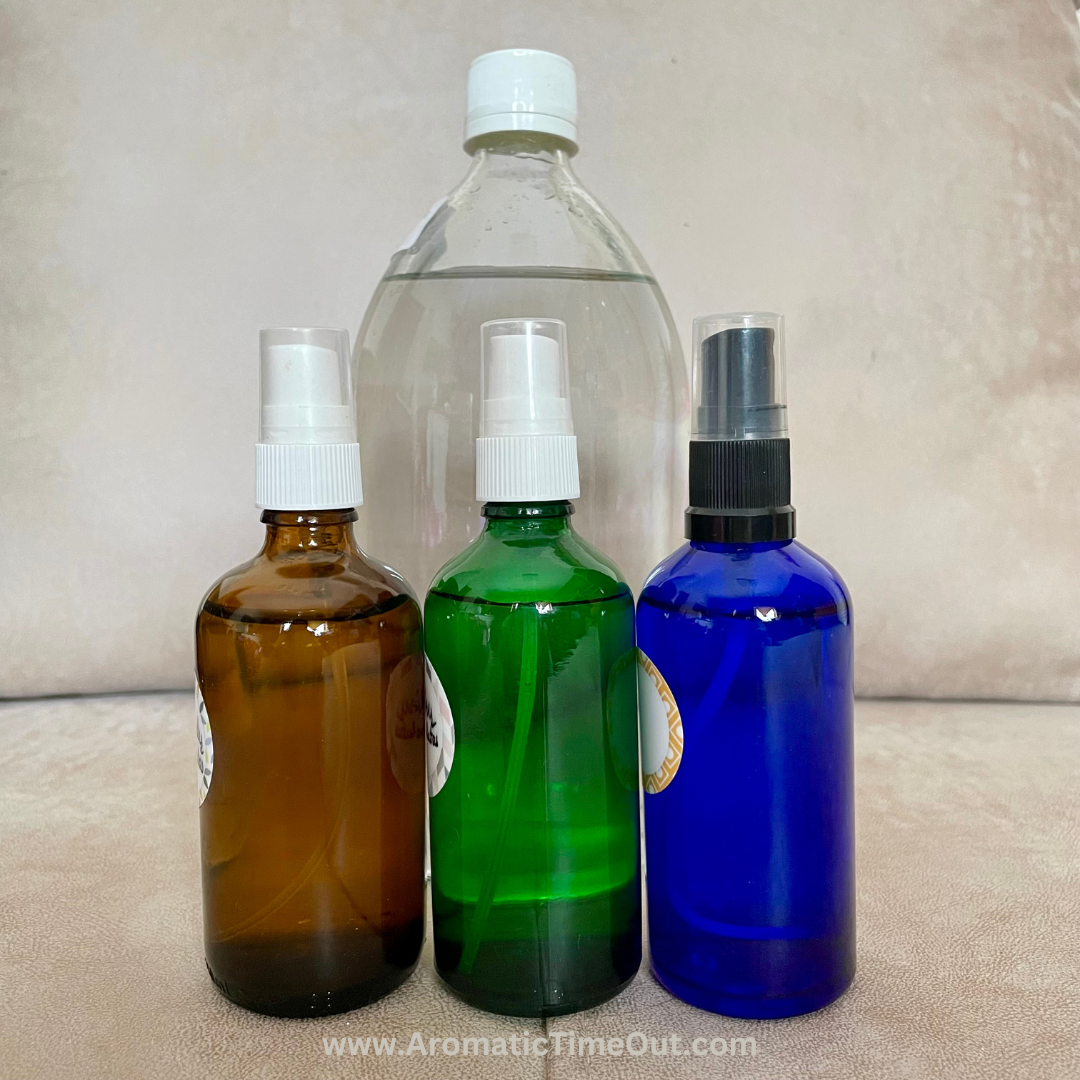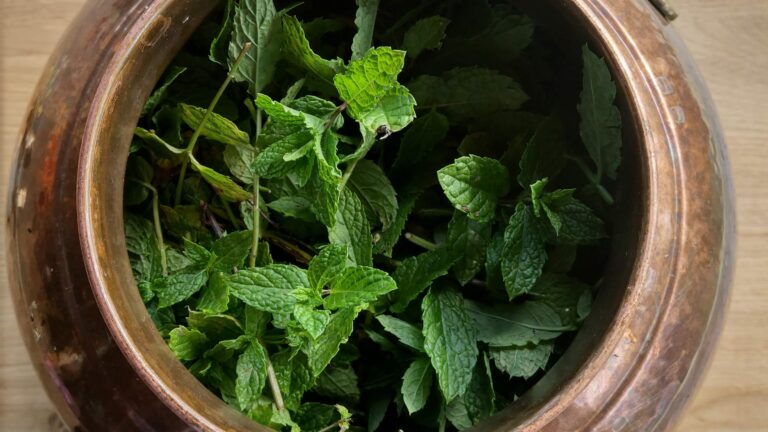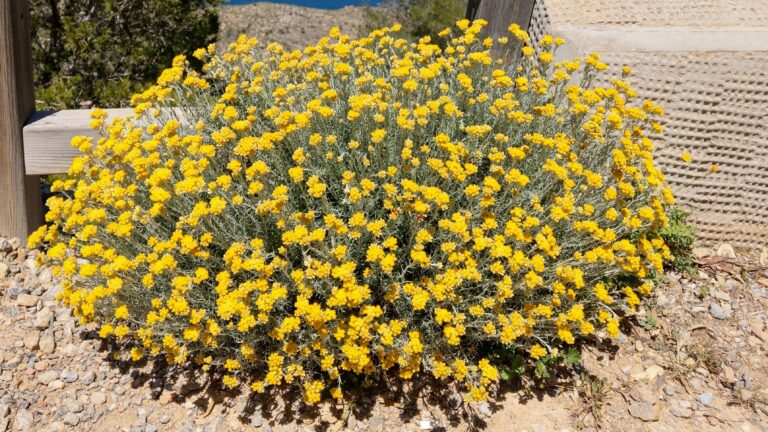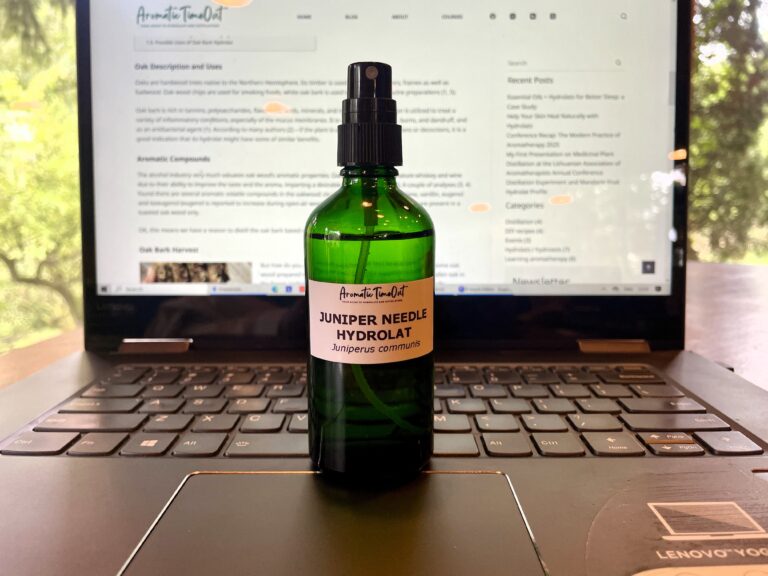There are numerous recipes and tips for using essential oils and herbs during the winter. However, hydrolats (or hydrosols) are often overlooked, which is unfortunate! The reality is that hydrolats can usually be used more easily and quickly.
If the term is unfamiliar to you – hydrolate is an aqueous distillate obtained by a distillation of a natural raw material. Essential oil may or may not be obtained at the same time. The term hydrosol is used mostly in the US to describe this same thing, but the International Organization for Standardization (ISO) does not list it describing aromatic materials. Read more about this in this blog post.
So here are 5 quick tips to tackle the cold season with hydrolats.
Tip #1. Elevate Your Tea Time
It can be as simple as adding a desired flavor to your daily cup of favorite tea.
But you can also incorporate hydrolats into your herbal tea to enhance its benefits when you feel unwell. Simply add 1-2 teaspoons of single hydrolat or a mix.
How do hydrolats enhance your tea? They contain 3-4 times higher concentrations of aromatic volatile compounds with very low molecular mass. This makes them quicker acting than the ones already in a tisane. They also enhance the aroma and the taste of your drink. If you try it – you’ll know.
Important note: add hydrolats when the tea is at a ready-to-drink temperature. Adding them to boiling water would result in an evaporation of aromatic molecules and a loss of the important properties.
Tip #2. Soothe with a Gargle
Combat sore throat during the cold season with a soothing gargle. Mix 2-3 tablespoons of a relevant hydrolat (or blend) into a cup of warm water. For an extra quick action, spritz it directly onto your throat.
Tip #3. Prepare Your Skin for a Nourishing Lotion
We usually use “heavier”, thicker creams, lotions and facial oils during the cold season because our skin needs more protection. That tends to leave a greasy feel on the skin for some time. Spraying hydrolate on the skin first not only helps spread the product more evenly but also speeds up absorption and adds a layer of hydration.
Tip #4. Indulge in a Warm Bath
It is such a pleasure to take a warm bath after a cold, rainy day!
Add a cup of single hydrolat (or a mix) to a foot or hand bath, 2-3 cups to a whole body bath. Let a gentle aroma soothe your skin and senses.
Tip #5. Enhance Your Sauna Rituals
Make your sauna experience even more relaxing. Spray hydrolat on your face or body before, during, and after the sauna. Use them to prepare herbal or clay masks and exfoliants, hydrate better by drinking tea or water with hydrolats, enjoy hot towel application, freeze hydrolats for a refreshing ice rubdown.
Recommended Hydrolats:
Relaxation and sleep support: lavender (Lavandula angustifolia), lemon balm (Melissa officinalis), Roman chamomile (Chamaemelum nobilis), neroli (Citrus x aurantium), sweet marjoram (Origanum majorana), clary sage (Salvia sclarea), ylang ylang (Cananga odorata), valerian spp. (valeriana officinalis, jatamansi).
Respiratory support: eucalyptus spp., sage (salvia officinalis), thyme (thymus vulgaris or citriodora), linden blossom (tilia), Scots pine (Pinus sylvestris), myrtle (Myrtus communis), bay laurel (Laurus nobilis), rosemary (Salvia rosmarinus., sin. Rosmarinus officinalis), lavender (Lavandula angustifolia), meadowsweet (Filipendula ulmaria), yarrow (Achillea millefolium).
Digestive system support: German chamomile (Matricaria recutita), common wormwood (Artemisia absinthium), basil (Ocimum basilicum), bay laurel (Laurus nobilis), rosemary (Salvia rosmarinus., sin. Rosmarinus officinalis), peppermint (Mentha x piperita), calendula (calendula officinalis).
For the skin: lavender (Lavandula angustifolia), carrot seed (Daucus carota), everlasting (Helychrymum italicum), Frankinsence spp. (Boswellia spp.), rose spp. (rosa damascena, rosa canina), yarrow (Achillea millefolium), geranium (Pelargonium graveolens), birch buds (Betula pendula / Betula pubescens), comfrey (Symphytum officinale), calendula (calendula officinalis)
Stay well and enjoy these benefits of gentle aromatherapy!
Recourses:
A.Harman. Harvest to Hydrosol, 2d edition. 2023.
L.Price, Sh.Price. Understanding Hydrolats: the Specific Hydrosols for Aromatherapy. A Guide for Health Professionals. 2004.
https://www.iso.org/obp/ui/en/#iso:std:iso:9235:ed-3:v1:en
Sign up and never miss new article:





